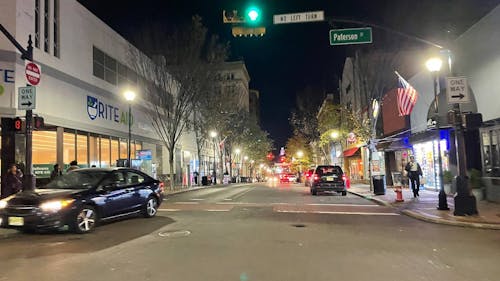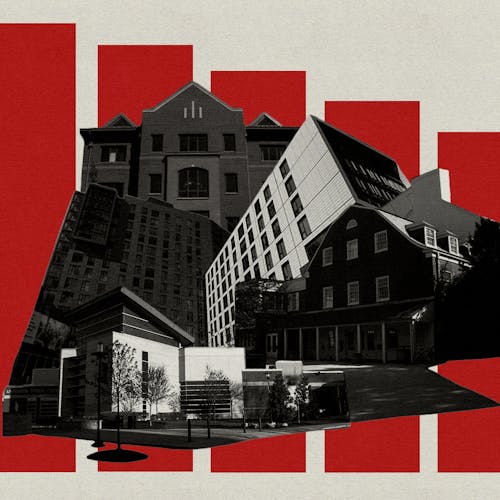EDITORIAL: Downtowns should keep some car-free zones for pedestrians
Cities should continue designing spaces that are pedestrian friendly

Since the coronavirus disease (COVID-19) pandemic, restaurants, stores and downtowns have had to reimagine how they operate and do business. In the need for safety, many communities decided to close their downtowns to car traffic to allow for more outdoor seating. Communities like Princeton and New Brunswick had parts that were fully pedestrianized — making for a different experience downtown.
These updated safety conditions helped communities thrive during the pandemic — restaurants stayed open, people could socialize without fear of viral transmission and life could, in some way, carry on in the new normal. As we are now moving away from stringent COVID-19 restrictions, though, many communities are rethinking their policies regarding outdoor dining and car-free zones.
New Brunswick, for example, has gotten rid of its pedestrian zone on George Street. Last week, the city began to allow cars to drive through the downtown area again. Where once tables and pedestrians populated the streets, cars have made their return.
While this move makes sense, as the weather is beginning to get colder and more people will likely want to sit inside, there is still something appealing and necessary about dedicating car-free zones for pedestrians to use. As we move further away from pandemic-related restrictions, we should not totally forego the possibility of keeping these zones in cities and downtown areas in the future.
New Jersey is, to some extent, known as a traffic-centric, car-centric state. In New Brunswick, for example, many individuals drive here, park their cars and then take the train. Or there is the infamous New Jersey Turnpike — which can be as wide as 14 lanes in some areas.
Such a number of vehicles in New Jersey has drastic impacts on the environment, air quality and just the overall ability to enjoy life. Such challenges make any specific area where cars are not allowed a refreshing experience. Places where there is no car traffic, no fear of pedestrian safety and no extra vehicular noise are few and far between in New Jersey. Car-free zones make it so that individuals can enjoy their time out, and we should ensure they remain in some capacity.
Having spaces where individuals can be without worrying about cars is one significant way towns and cities can cultivate a sense of community. Downtown New Brunswick, for example, would have live music with people sitting outside and enjoying the night on the street. These types of events are informal, but they are important methods to create bonds between individuals and strengthen the sense of being part of a collective.
One approach that would account for the changes in weather and the potential need to have cars drive through downtown would be to make pedestrian zones seasonal. During winter months (and maybe even summer months, when it is too hot), the majority of individuals probably will not want to sit outside. But despite this, many individuals enjoy sitting outside when the weather is more temperate.
There should also be certain weekends or days designated for car-free experiences year-round. For example, New Brunswick might want to have a few days in December as pedestrian-only days downtown to encourage more shoppers and create a winter market atmosphere.
Especially during the holiday season, partitioning some parts of New Brunswick would allow individuals to enjoy downtown without worry and noise. Especially if there is live music or some other form of entertainment, the downtown area could become really lovely and help ensure citizens of the city can enjoy the holidays.
Rutgers is in New Brunswick, but the University sometimes feels completely detached from the downtown area of the city. If you do not live on the College Avenue campus, getting to downtown New Brunswick is a challenge. During the pandemic, Rutgers decided to stop buses from going through downtown out of an abundance of caution.
To make it easier for students to get downtown, though, Rutgers should seriously consider re-instituting bus routes that bring students downtown. An added stop at the train station, perhaps, would make it easier for students to get downtown without needing to drive.
While the pandemic caused incredible stress for all of us, it did force cities to reimagine what their downtowns might look like. By investing in more outdoor spaces, there could be a better quality of life for residents and visitors of cities and towns.
The Daily Targum's editorials represent the views of the majority of the 154th editorial board. Columns, cartoons and letters do not necessarily reflect the views of the Targum Publishing Company or its staff.



